This Land Was Your Land
Here we go again with this ... plus, billboard advocacy, sea lions, tech on the thru-hiking trails, flower bombs, and much more
Another Attack on Public Lands
Well … it didn’t take long for the privatization-kinksters in Congress to set their sights fully on the country’s public lands. Last week, Republicans in the House of Representatives added a last-minute provision to the upcoming budget proposal that would allow the government to sell federally held public lands in Utah and Nevada.
“In theory,” and I am using the most sarcastic of sarcastic quotes here, this provision is aimed to alleviate pressure on housing and generate revenue via extractive industries for (again with the quotes here) “debt and deficit reduction.” In practice, it is an irrevocable loss of public land and access now and for generations to come.
This is not surprising—it’s in line with the Sagebrush Rebellion plans (and more recently the Project 2025 plans) to sell the country for scrap. It’s also in line with the Republican budgetary priorities of removing funding and protection from public lands, in effect ruining them so they can show us how poorly the government can take care of them. The proposed budget currently seeks to cut $900 million from the National Park Service, $564 million from the USGS, $200 million from the Bureau of Land Management, and $170 million from the U.S. Fish and Wildlife Service. The budget also instructs the agencies to “transfer smaller, lesser visited parks to state and tribal governments.” And, you know, the whole “correct sizing” of National Monuments re-run from the previous time these guys were in charge.
In the past, park sites have generally been given a great deal of autonomy in how they are run and how they interact with their gateway communities and constituents. That also looks like it’s changing too, with a new
directive consolidating over 1,600 National Park Service positions directly under the Department of the Interior and Secretary Burgum and DOGE staffer Tyler Hassen. According to the site Resistance Rangers, which is a group of over a thousand off-duty NPS rangers, this is essentially a gag order on parks communication and a way to hide more public lands layoffs, which they expect another round of soon.
Although there are executive orders to ensure recreational sites remain open, in the High Country News piece on this, a spokesperson for the National Parks Conservation Association notes that cutting $900 million from the NPS budget is the equivalent of closing 350 park sites. But I guess we probably don’t need to worry about that discrepancy since this team has such a stellar record of fiscal responsibility, right?
While this all sounds like (and is) troubling news, there is still that ever-elusive silver lining that I mentioned in the last newsletter: this stuff is unbelievably unpopular. This is not the first time these people have tried to do this, and in the past, legislators have responded to voter outcry by slinking back into the shadows. So here’s hoping we can get that kind of outcome again.
For more, here's an excellent analysis of what’s going on at Vox.
RELATED
If you are a current OR FORMER government worker, High Country News is offering up free digital access right now. This is designed for people who have had to cancel news subscriptions because of budgetary or political pressure or have lost their jobs due to job purges and would like to stay informed about issues facing our public lands. There is a form to fill out here.
Subscriber Section
If you’re a paid subscriber, not only do you get instant access to newsletters as they publish and the ability to comment, but you also have the ability to ask me anything, anytime! Ask me about the outdoors, writing, travel, whatever, and there’s a chance I’ll answer it right here in the newsletter for ya.
Oh also, next week is my birthday! Just in case you were looking for an excuse to support my ever-growing caffeine habit over at Buy Me A Coffee ….
Your Parks
Your Places
A New Kind of Billboard
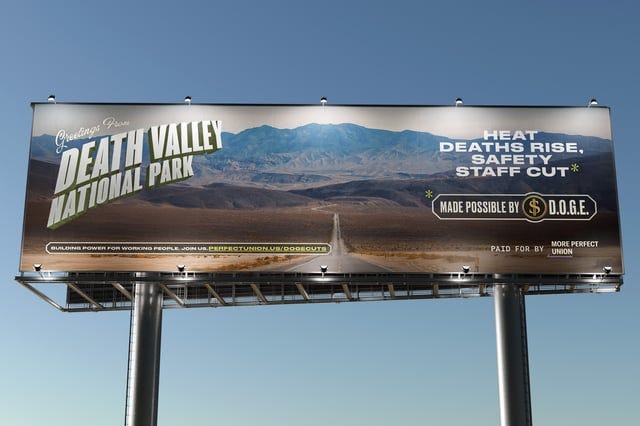
In keeping with the spirit of the opening story, the nonprofit advocacy group More Perfect Union has paid for 300 new billboards all across the country to highlight these threats to our public lands—and call out the groups responsible for it.
I first saw these popping up on Instagram and on some of the public land Subreddits I follow, but National Parks Traveler has a story with the full list of cities and towns were these billboards are currently on display. I kind of love these—what about you?
RELATED
Five ways summer vacations depend on public lands – via Forbes
Tech Talk
Gadgets, Technology, and Hype
Thru-Hiking with Tech

Subscriber Patrick in Washington, D.C. passed along an interesting article out of Virginia Tech that looked at the negative and positive aspects of social media and connected technologies on the stretch of the Appalachian Trail in the Old Dominion.
As expected, the general increase in accessibility of information led to an increase in use—which is not a bad thing as long as that information is accurate and the land management agencies are staffed and supported enough to deal with / redirect the increased foot traffic (spoiler: that rarely happens). But on the flipside, hikers now have much better information about weather, food and water caches and supplies, and recent experiences from their fellow hikers.
Another interesting item from the report: a shift in what solitude means for people on the trail. In the past, the motivation to “get away from it all,” and sort of just walk off into the woods for a few months and disappear was one of the leading reasons people took on the long distance trail challenge. But now, more thru-hikers report looking for a sense of community along the trail (with that big healthy dose of solitude too, of course). I remember hearing that from thru-hikers even before social media was a thing, but if that desire was amplified by our current cultural trend of just hollowing out community-building organizations, I really would not be surprised.
Wildlife Crossing
Wildlife and the Outdoors
Sea Lions in the City
Recently on Instagram, the Human Access Project—the primary mover and shaker for helping Portland, Oregon reclaim access to its primary waterways—posted a video from a pair of spring paddleboarders in the Willamette River who were making their way through the city when they were joined by a few packs of sea lions.
Although it is cool to see these critters swimming around in the river (and it’s a sign of how the watershed’s health has been dramatically improved), an increased number of sea lions have been preying on threatened steelhead and salmon in parts of the river.
Leafing Out
Plants!
The Smell of Nature
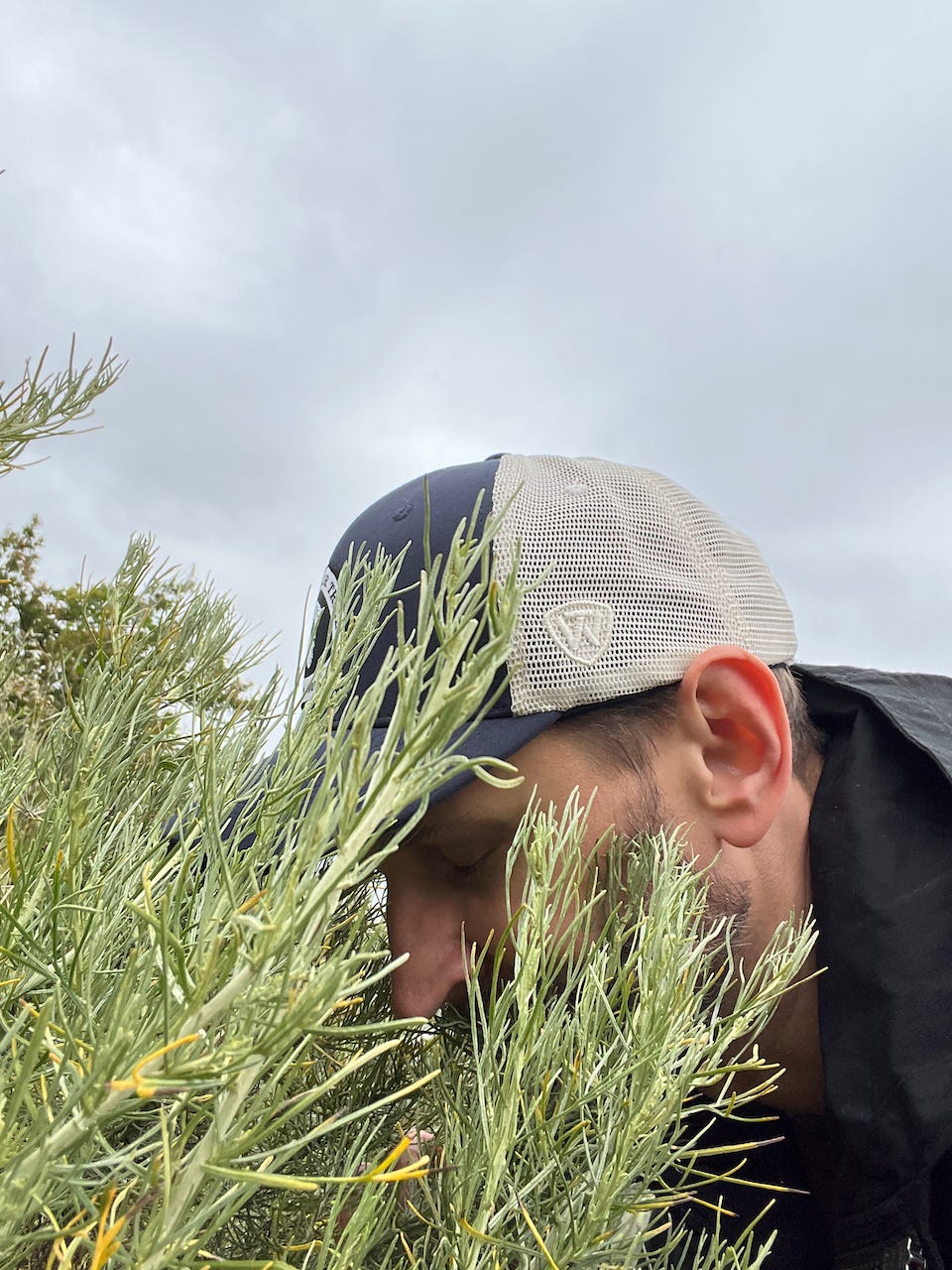
What do you think is the smell of the outdoors? Depending on where you live and what time of the year it is, you probably have different answers. My springs here in Portland smell a lot different than my springs in Los Angeles did—which is probably not surprising since they have very different plant communities and climates and I tend to be tuned to those sorts of smells anyway.
In the Washington Post, a pair of science writers decided to tackle this and found that even though there are plenty of variances, there is a sort of universal “smell of the outside” no matter what your location or time of year is.
There’s some interesting science here, but one of the most interesting little tidbits is that when you smell the smell of rain (which is technically called petrichor, just in case you need a new trivia fact), the primary compound in that scent is called geosmin. Humans are especially attuned to this particular scent, with some anthropologists hypothesizing that it has helped us locate sources of water.
And there’s this great quote from the founder of a perfume house, too: “Humans can smell geosmin better than sharks can smell blood in the water.”
Flower Shaker
Although the season for wildflower seeds has passed in most areas, that doesn’t mean we can’t already start planning for next year, right? Wildflower advocate Mr. Bloom posted some very fun video of his seasonal efforts in the city of San Francisco, which include skateboarding past empty traffic medians while wearing a bee costume and shaking a bunch of wildflower seeds into the dirt.
He also sells regional wildflower mixes depending on what part of the United States you live in, which is pretty neat.
One More Thing
Oh yeah, before I go …
I meant to share this one a little while back, but this is an exceptional piece of writing from fellow Portlander Amy Stewart on what it’s like to lose a neighborhood tree. It’s very melancholy but also sweet, and I think anyone who likes to pay attention to their surroundings will find something in here to enjoy.
Until next time then,
Happy Trails.




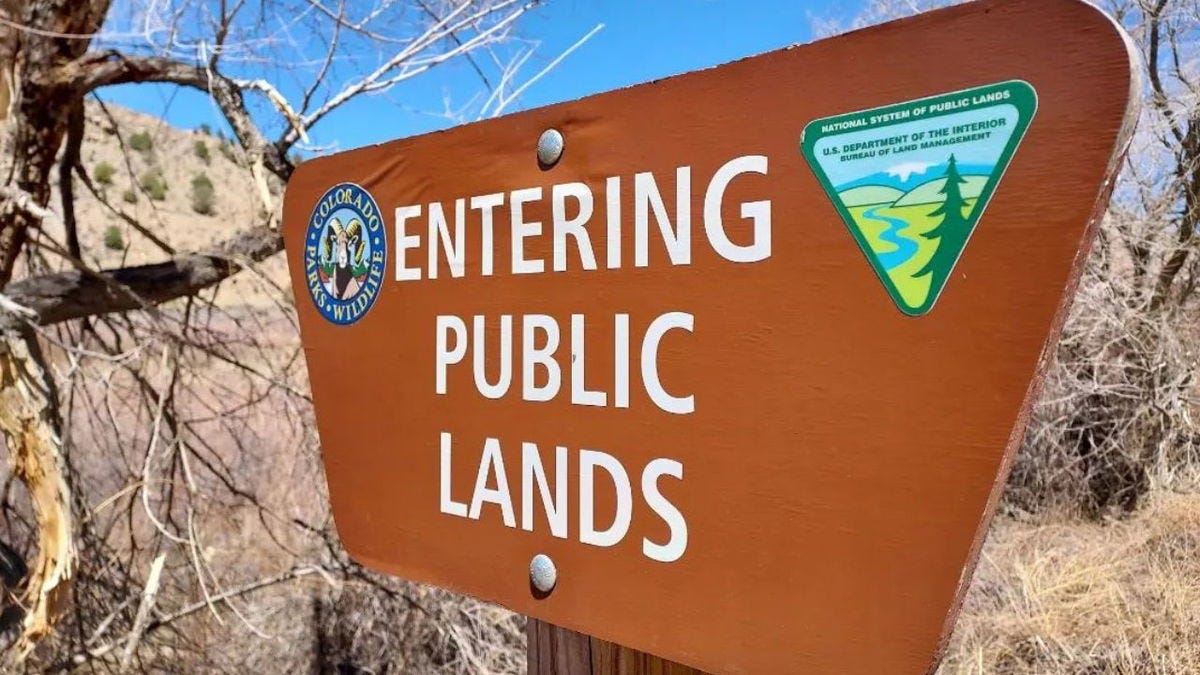
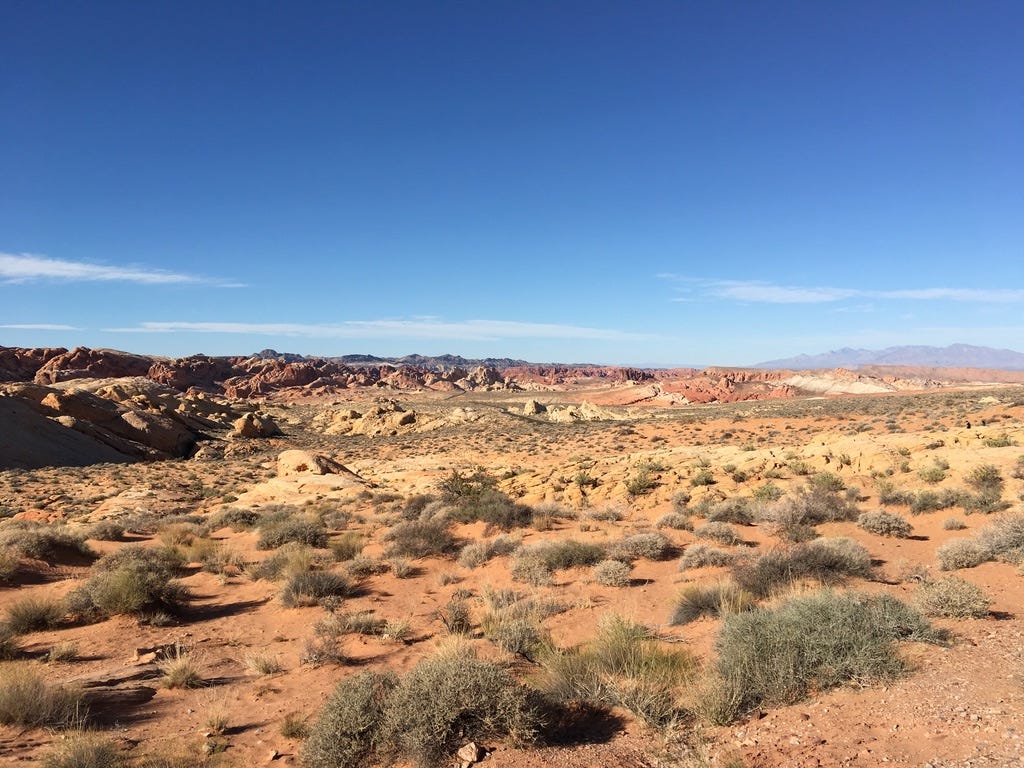
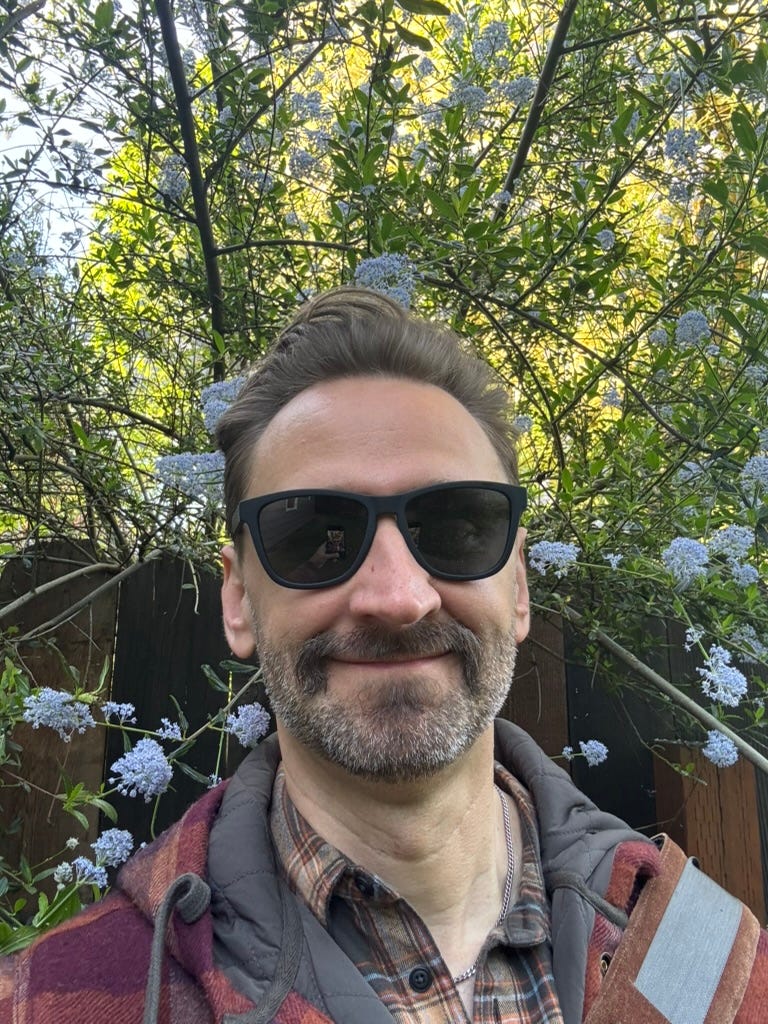




Great newsletter, Casey!
Now those are some billboards I can get behind.
Headed to Nevada and Utah next week to photograph some of these BLM lands that are marked for disposal. Though, the bill still needs to go through the full house and senate, so hopefully we can all make some f'ing noise about the absurdity and unpopularity of the sell off.